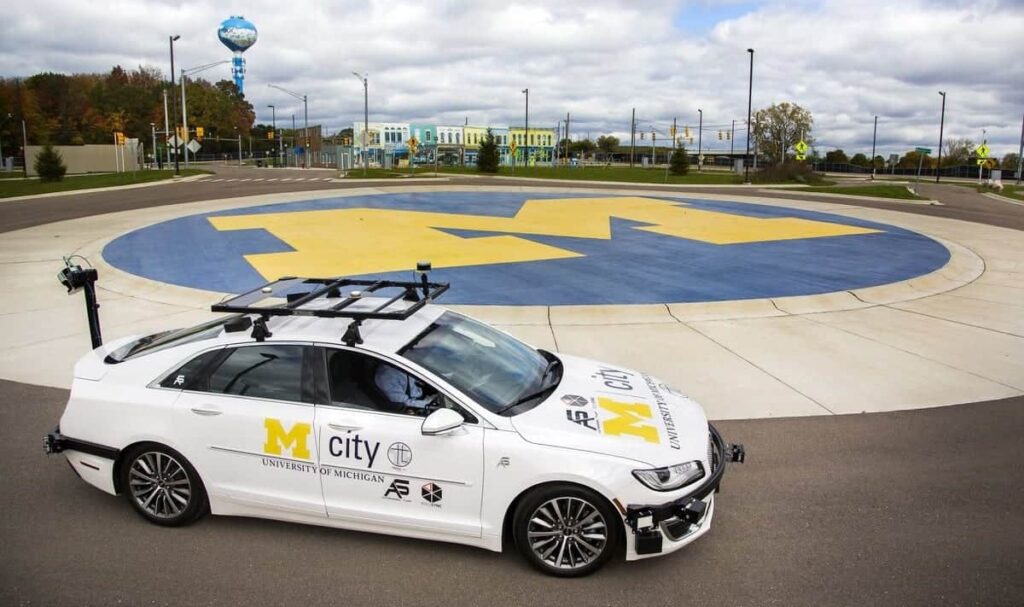The University of Michigan’s Mobility Transformation Center (MTC) has demonstrated to automakers how the next-generation broadcast standard will enable data services for the connected and autonomous vehicles of tomorrow.
Led by MTC Leadership Circle member LG Electronics, this marks the first public demonstrations of important new business-to-business applications of the Internet protocol (IP) based ATSC 3.0 standard. For the landmark demonstration, Sinclair Broadcast Group is transmitting firmware updates for telematics and advanced emergency alerting data, along with television programming, from Detroit Channel 56 (on loan from Dish Network).
Robust over-the-air transmission of massive quantities of IP bits to vehicles – complementing ATSC 3.0’s capabilities for delivery of 4K Ultra HD, immersive audio and interactive capabilities – “opens new opportunities for broadcasters, automakers and drivers alike,” according to Mark Aitken, Sinclair’s Vice President, Advanced Technology.
“Think of vehicles as large mobile devices with multiple imbedded computer-based systems, requiring wireless, high-data-rate connectivity. And with autonomous vehicles, data needs will only increase. The new broadcast standard was designed with 5G convergence in mind,” said Aitken, who highlighted the benefits of ATSC 3.0’s fat IP data pipe and robust transmission capabilities for the automotive industry.
Unlike cellular-based technologies, broadcasting’s one-to-many architecture is highly scalable, serving millions of devices simultaneously without straining the network. “That means www.LG.com broadcasters can send 4K content to Ultra HD TVs in consumer homes and, at the same time, deliver data to cars – for everything from telematics and infotainment to diagnostics and emergency alerting,” said Dr. Jong Kim, Senior Vice President in the Office of the Chief Technology Officer, LG Electronics Inc., and President of LG’s U.S. R&D subsidiary, Zenith Electronics.
For example, ATSC 3.0 signals will be able to deliver software updates for electronic control systems and firmware downloads for navigation devices. “Geo-located applications will include real-time weather services and traffic reports, as well as targeted emergency alerts, and even targeted ads,” Kim explained. ATSC 3.0 also will help transform infotainment with robust technology to deliver digital audio and video services. With “hotspot” integration in vehicles, live local TV also can be delivered to Wi-Fi-enabled handheld devices for backseat entertainment.
Using a simple antenna, displays from LG Electronics with imbedded ATSC 3.0 chips received the over-the-air firmware updates and AWARN (Advanced Warning and Response Network) signals as well as 4K Ultra HD and HD programming simulteaously. In addition to Sinclair, the MTC demonstrations were supported by other technology companies including DS Broadcast, which provided the HEVC and DASH encoders, and DigiCap, which provided the signaling server and multiplexer.
Showcasing ATSC 3.0’s capabilities for the automotive industry supports the Mobility Transformation Center’s mission of pulling together the diverse expertise and resources required to realize the unprecedented potential of connected and automated mobility. With the MTC, the University of Michigan has created a public-private partnership to work on connected and automated mobility systems. Together with automakers and other technology companies, LG is a member of the MTC Leadership Circle, selected industry partners working with government and faculty to serve as thought leaders in guiding and synthesizing the MTC’s work.



















